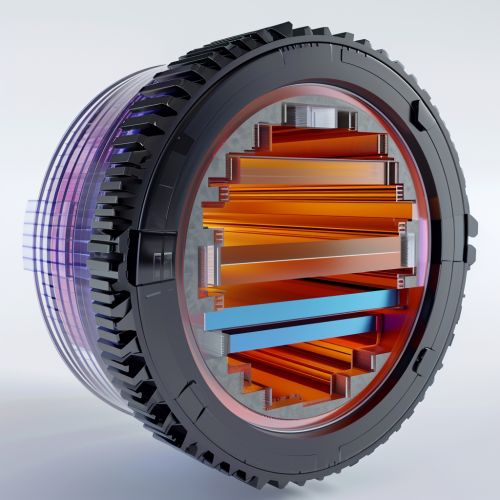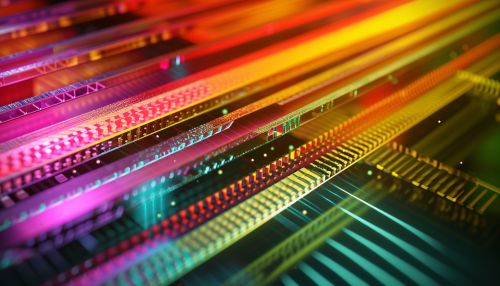Vertical-cavity surface-emitting laser
Introduction
The Vertical-cavity surface-emitting laser (VCSEL) is a type of semiconductor laser diode with laser beam emission perpendicular from the top surface, contrary to conventional edge-emitting semiconductor lasers which emit from surfaces formed by cleaving the individual chip out of a wafer. VCSELs are used in various laser applications including fiber optic communications, laser printers, and smart illumination.
Structure
VCSELs are typically designed as a sandwich of multiple layers of materials with different refractive indices. The active region of the VCSEL is situated between two distributed Bragg reflectors (DBRs), which serve as the mirrors of the laser cavity. The DBR mirrors are composed of alternating layers of high and low refractive index materials. The thickness of the layers and the number of pairs are chosen to achieve a high reflectivity at the wavelength of the laser. The active region is typically composed of quantum wells, which provide the gain medium for the laser.


Operation
The operation of a VCSEL is based on the principle of stimulated emission. When a current is applied to the VCSEL, electrons and holes are injected into the active region. When the electrons and holes recombine, they emit photons. These photons stimulate the emission of more photons from other electron-hole pairs, leading to a chain reaction that results in the emission of a coherent beam of light from the top surface of the VCSEL.
Advantages
VCSELs have several advantages over other types of laser diodes. They can be tested on the wafer level, before they are cleaved and packaged, which can significantly reduce production costs. They also have a lower threshold current, which means they can operate at lower power levels. Additionally, VCSELs have a circular output beam, which is easier to couple into a fiber optic cable than the elliptical beam of an edge-emitting laser.
Applications
VCSELs are used in a wide range of applications. In fiber optic communications, they are used for short-distance data transmission. In laser printers, they are used to generate the laser beam that forms the image on the paper. In smart illumination, they are used to provide controlled lighting for image sensing applications. Other applications include optical mice, laser scanners, and gesture recognition systems.
Future Developments
Research is ongoing to improve the performance of VCSELs and to develop new applications. One area of research is the development of high-power VCSELs for use in industrial and medical applications. Another area of research is the integration of VCSELs with other components on a single chip to create more compact and efficient optical systems.
